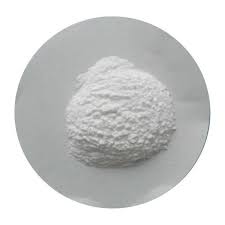-
vaspsons@gmail.com -
View Mobile Number
The Meaning Of Food Grade And Its Importance
Posted by Admin on September, 10, 2020

It is of prime importance to deliver products that have adhered to the safety procedures in regards to production and consumption for both food equipment manufacturers and food producers. And while the two camps boast of their sets of necessary regulations to abide that are equally unique and that, often intersect, they both have a shared goal.
The goal is is to offer food-grade products that offer the processes that get them developed.
Food Grade: Definition
Food grade features two different definitions.
1. It is a safe material for human consumption.
2. 2. It is a suitable material that can be brought into direct contact with food products.
Based on whom you seek for help and in which industry they work, foo grade has different meanings, For instance, the FDA or the U.S. Food and Drug Administration owns its unique set of complicated regulatory processes and strata that holds into account whether the additives in a certain food is ideal for human consumption.
The agency’s processes comprise a huge list of steps to take to promise food-grade status, beginning with the substance identification, the property breakdown, and the standard of purity for every substance, followed by the restrictions on conditions of use.
Food Grade Salt: What is it?
The food-grade salt is a crystalline product that consists majorly of sodium chloride. The food-grade salt is obtained from the natural brine, underground deposits of salt, or from the sea.
The Food Grade Material
On the other hand is the food-grade material, like the food-grade stainless steel, which has been made suitable to come in contact with the food products directly, Thus means that the surfaces cannot include any toxic components. Besides this, they must also be made to let the end-user follow the cardinal rules.
• The material is put into use within the recommended range of safe temperatures.
• The material can be referred to as safe for the food type that is is in contact with.
• The integrity of the material will not falter during the routine cleaning and sanitization process.
The Importance of Food Grade
When there is a disconnection in the supply chain of food-grade standards, the food manufacturers can put the consumers at high risk. This is something that can easily falter, especially when for food equipment manufacturers who built with the help of heavy materials,
While the thought of integrating inexpensive, non-food grade components into the food equipment’s final design for the food-grade suppliers in India, even the most insignificant part could contribute to harming the consumer or get the manufacturer into a hassle for non-compliance.
This is the reason why all the food manufacturers and food equipment manufacturers should only create as per the recommended hygiene design designations and sanitation.
Being Food Grade Compliant
While the agencies like the FDA do not offer food-grade certifications, food-grade compliance is an all elaborative process that needs all food components-and the surfaces with which the components come in contact-to include materials that are safe for consumption.
To summarize, the parties engaged in the food manufacturing and the materials that come in contact with-are all responsible for the product components. Without these guidelines, consumers might encounter unnecessary risks.
Search
Category
Recent Posts
Leave a Comment